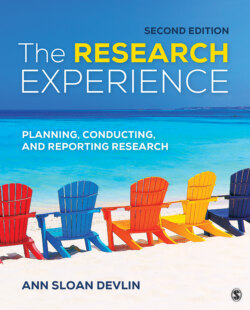Читать книгу The Research Experience - Ann Sloan Devlin - Страница 78
Reviewer Selection
ОглавлениеWhen a journal states that it is a peer-reviewed journal, what that means is that people knowledgeable about the topic in question have been invited by the journal editor to evaluate the quality of the paper. Usually a journal specifies particular categories for comment, including the currency and coverage of the literature, as represented in the introduction, the theoretical grounding, the scope of the research question, methodological issues (e.g., sample size and adequacy of measures), appropriateness of statistical approach, significance of findings, and contribution of the study to the literature (answering the “what’s new and noteworthy here?” question).
Journal editors are increasingly aware that fraud occurs in the reviewer process (e.g., authors create false e-mail addresses for reviewers and suggest these fictitious reviewers provide a review—essentially generating the reviews for their own manuscripts). In one instance, a reputable journal retracted 60 published articles after it was determined that there was author and reviewer fraud (https://www.sagepub.com/en-us/nam/press/sage-statement-on-journal-of-vibration-and-control). Many journals subscribe to the Committee on Publication Ethics (COPE) for reviewers. The guidelines are available on the COPE website: http://publicationethics.org/resources/guidelines.
Committee on Publication Ethics (COPE): Sets standards for editors and reviewers who evaluate research.
In addition to what one would normally expect of a reviewer (e.g., expertise in the subject area and agreement to keep the manuscript and review details confidential), providing fair reviews involves degrees of separation. The reviewer should not have collaborated with the author (usually there is a time frame, for example, 3 years), be at the author’s institution, or in other ways be familiar with the manuscript that is being reviewed.
